| |
Combat Readiness 1970s
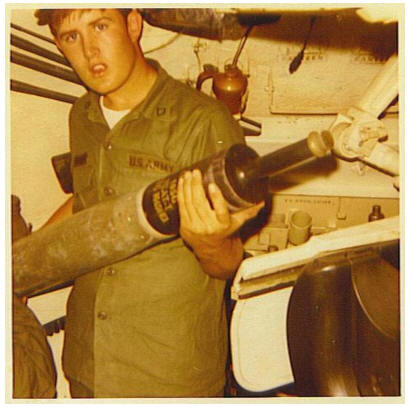 Here are a pair of articles from the New York Times that
provide an interesting snap shot of military life and combat
readiness in the 14th and 11th ACR in Germany during the
hectic decade of the 1970s. While both articles focus
primarily on the cavalry squadron at Fulda, what reporters
found at Downs Barracks was probably very similar to the
state of affairs at Daley Barracks. Here are a pair of articles from the New York Times that
provide an interesting snap shot of military life and combat
readiness in the 14th and 11th ACR in Germany during the
hectic decade of the 1970s. While both articles focus
primarily on the cavalry squadron at Fulda, what reporters
found at Downs Barracks was probably very similar to the
state of affairs at Daley Barracks.
In 1972, when the first article was printed, I was in high
school. When the second article hit the newsstands, as a
brand new Second Lieutenant, I had been at Bad Kissingen for
about one month and the very first letter I received from
home contained the newspaper clipping with portions
underlined in red or highlighted in yellow. My parents
definitely wanted details and explanations.
If you were there, your individual memories may or may not
agree with what the reporters found but as long as
researchers are spinning microfilm rolls to learn about the
V Corps border cavalry in the post Vietnam Army, they will
leave with impressions based on these stories.
________________________
New York Times
David Binder
16 March 1972 (Stars and Stripes reprint date)
“ Nothing to do Syndrome “ - At Fulda. Boredom is the
Real Enemy?
For the 2000 men of the Army’s 14th Armored Cavalry Regt,
whose principal mission is to guard a section of the Soviet
Bloc border near here, the major enemy appears to be
boredom.
The problem comes up at every level from privates to
commanding officers and in dozens of variations, the most
extreme of which are alcoholism among senior non
commissioned officers and drug abuse among young draftees.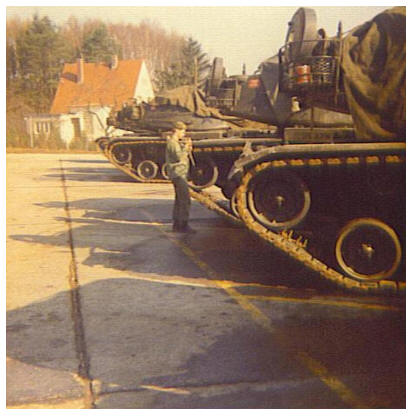
But in the experience of CPT John Keller, a unit chaplain,
it also appears in insidious forms among married career
soldiers. “ I find I am doing much more marriage counseling
here, “ he said.
“ We have a problem for instance, in that we don’t have
American television here as some other posts do. That means
a soldier and his wife have got to talk to each other in the
evenings and suddenly, they discover they really don’t like
each other. “
Many Facets
The boredom syndrome seems to have many facets, For the
draftees, it is a defensive reaction to their first exposure
to a foreign environment summed up by 22 year old Jim Aclin
of Little Rock, Ark. “ They don’t like the Army and they
don’t like it here and claim there is nothing to do.”
For older career men, it is perhaps the emotional letdown of
serving in this quiet and conservative backwater region of
Germany after the strain and thrills of combat duty in
Indochina.
For nearly all, it is the unspoken question of what exactly
the 14th Cavalry is dong here on an active mission nearly 27
years after the end of World War II and in an era of peace.
Doing its Job
Not that the Regiment isn’t doing its job, it’s eyes and
ears - helicopters, rifle patrols, scout car sweeps, radar,
infrared and other sensors - are continuously watching the
East Germany frontier and the land beyond.
Neither the east German People’s Army, the West German
Federal Army or the Soviet Army are as present at the border
as are the units of the 14th, in the description of its
commander, COL Egbert ( Bud ) Clark III. The other Army
formations keep their distance. The US regiment’s “ border
mission “ requires it to hunker down right on the line.
Clark’s men often combine training cycles with patrol duty
at the border. One day recently, there was a 10 man rifle
squad up on the hilly frontier, walking nine miles on
reconnaissance and then flying back by helicopter as part of
its training.
Fir Forest
Another formation was practicing a kind of shadow boxing war
game between attacking tanks and defending scout vehicles in
a fir forest south east of headquarter here. The crews of
M114 scout vehicles would be doing just this sort of thing
in the unlikely event of a Warsaw Pact incursion into West
Germany. There doesn’t seem to be much boredom at the border
or in the field for the armored cavalry, that begins back in
the lime green barracks of the base on the western edge of
Fulda. For the young, that often means a bowl or three of
hashish, which is available in the town at one eighth of the
price in the United States. For the NCOs, it is sometimes a
bottle of whiskey and a quart or two of beer.
Clark, in command here since last year, enjoys respect as a
man who salts his task mastering with a dry wit. He appears
to be using every possible means to combat the problem of
abusing alcohol and he counts alcohol as a drug.
He has established a special drug and alcohol counseling
center in a Quonset hut on base. It is manned 13 hours a day
by six troopers, most of whom have university training in
psychology or sociology.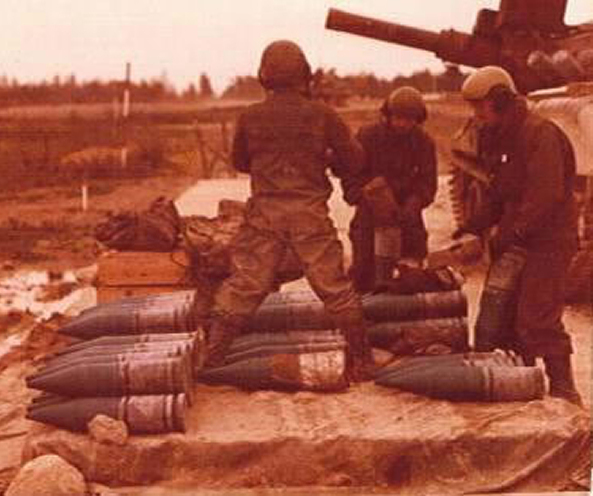
Since November, they have worked with 80 drug users,
sometimes successfully. One of the troopers permanently
detached for duty at the center is Aclin, of Little Rock,
himself a former user. Another is an articulate black,
Edward Purham, who says that Fulda’s unreceptive attitude
toward his fellow blacks has made the boredom problem a bit
more acute for them.
Purham said there were five Fulda nightspots which refused
entry to black soldiers under various excuses. The regiment
is considering putting them off limits and has sent out
questionnaires in German to the owners.
The boredom issue also came up at a session of a so called “
bootstrap “ class of 23 officers and NCOs. Along with the
attendant problem of drugs, Bootstrap is a new command wide
program designed to stimulate communications between
officers and lower ranking men and to work out joint
policies.
The seriousness of purpose of these career troopers as they
discussed their leadership problems with Clark was
impressive.
But the colonel sounded almost desperate as he bemoaned the
lack of interest in the regiment of the myriad of free time
activities available to the men under a Special Services
program. A lieutenant suggested that since the troops seemed
to ignore pamphlets announcing excursions, sports events,
theatricals and other events, it might be might be worth
trying a loud speaker tuck on the base. A wan smile crossed
Clark’s seamed face. “ We’ll try it, “ he said adding: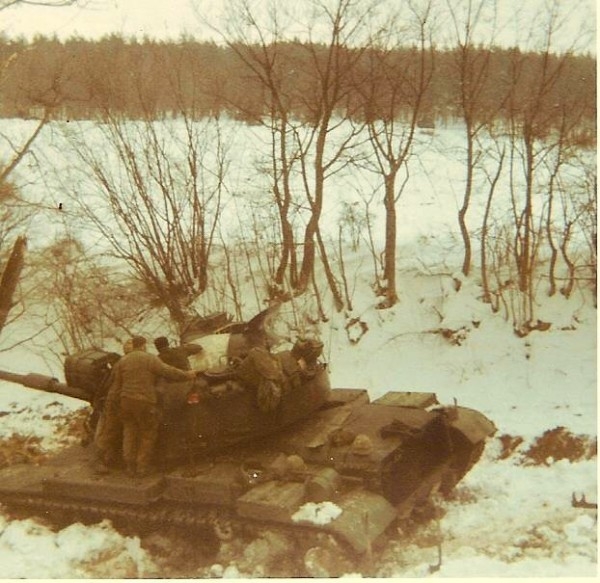
“ I’m half serous when I say I’ll order a company up to the
Rod and Gun for skeet shooting or to church or over to the
glider range at Wasserkuppe and march them there if I have
to. Anything to deal with this complaint that there is no
place to go and nothing to do.”
______________________________
New York Times
Drew Middleton
May 15 1978
U.S Army in Germany Confident it is in Fighting Form
Fulda, West Germany, May 10 - The sirens sounded at 4 A.M.
over the barracks in the sleeping city and the mist covered
green hills of Hesse. Lights appeared. A tank motor coughed,
caught and then throbbed steadily. A soldier running toward
the motor pool shouted, “ This what they mean by ‘ the
dawn’s early light, ‘ Sarge?”
The sirens summoned the First Squadron of the 11th Armored
Cavalry to one of the alerts that are part of border duty.
The jeeps sped out to points where they could observe and
report any advancing Soviet forces. The tanks, 155
millimeter howitzers and armored personnel carriers pounded
down the gray streets of the gray city to the positions they
would occupy if “ it happens “.
Sirens also roused the Second Squadron
at Bad Kissingen Within an hour the regiment, 3834 men
strong and with 90 percent of its equipment operational, was
deployed.
“ Sharp End “ of Readiness
This was the Seventh Army’s readiness and what the troopers
call “ the sharp end “.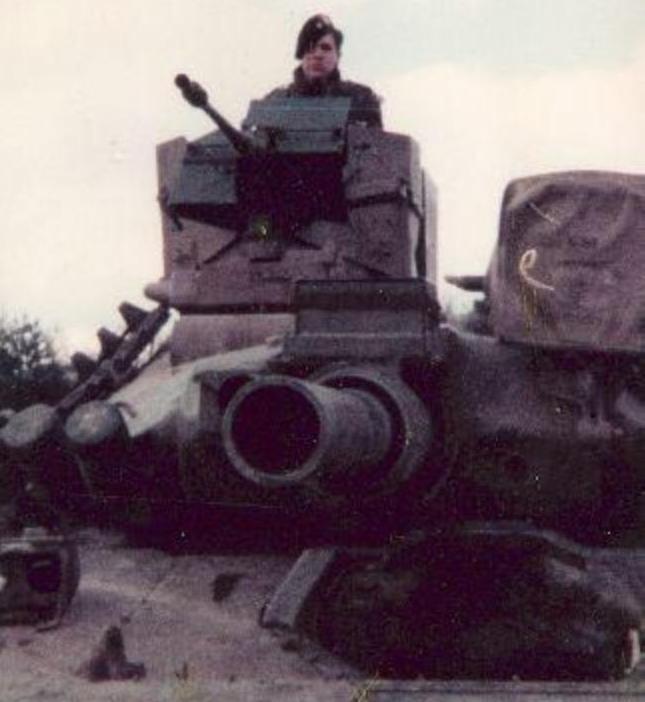
How ready is the Seventh Army to fight the Russians? A week
of countless talks with enlisted men, noncommissioned
officers, company and troop commanders and general officers
led to two conclusions. First, the Seventh Army, despite
some inadequacies in the most advanced equipment, is ready
to meet and hold the first wave of any Soviet invasion from
East Germany.
Second, the basic question is not the army’s readiness but
whether it could sustain the battle at its present levels of
ammunition, weapons and manpower.
Could Hold In First Stage
The Fifth Corps, deployed in the northern sector of the
army’s area is believed capable of handling a first
attacking echelon of six or seven Soviet divisions on its
front in a battle whose first stage would probably last five
to seven days.
There would be a two day delay, it is estimated, before the
Russians renewed the attack on a corps that would then be at
50 percent of its strength in weapons, munitions and
equipment. That is the point at which sustaining the battle
becomes the key.
The issue is not simply whether
airborne reinforcements from the United States would arrive
to participate in the second phase of a battle. Rather, it
is whether the army would have the resources in manpower and
ammunition to keep the front supplied.
“ It is easy to see a situation in which tank mechanics
would have to work all out to load ammunition for artillery
and tanks.” a staff officer said. “ Who would be left to
service the tanks? That would be one result in war of
reducing the support units in peace.”
A Spasm of Combat
The consensus among officers is that the army would be
capable of a spasm of intense combat that would use up
ammunition and weapons at an unprecedented rate. The
movement of supplies and reinforcements to the battle area,
they conceded, would be difficult.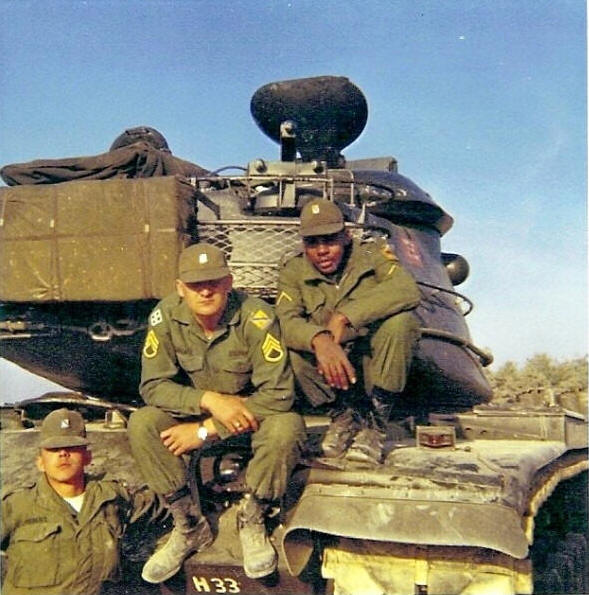
No one in the Seventh Army underestimates the weight and
character of a Soviet attack.
“ Once the Soviet artillery hits, we must assume they will
be using N.B.C. ( nuclear - biological - chemical ) weapons
across the board, said CPT William Marshall who commands I
Troop of the Third Squadron of the 11th Armored Cavalry.
Sgt. Charlie Smith, who was instructing soldiers on the use
of gas masks, decontamination and detection agents and
protective clothing, nodded and said: “ You guys understand
that, don’t you?”
New Estimate of Tactics
The emphasis on training for nuclear, biological and
chemical warfare is a long overdue element in Seventh Army
preparations, inspired by revised estimates of Soviet
tactics.
The Russians it is thought would try to seize Western
Europe’s industries relatively intact. They have never been
interested in developing the neutron enhanced radiation
weapon, which kills troops but does little collateral damage
because they have, it is said, abundant stores of chemical
weapons including nerve gases that would have a similar
effect.
Gen. George S Blanchard, the Seventh Army’s Commander, takes
a restrainedly optimistic view of his force’s readiness.
The Seventh Army, he said, is at more
that 100 percent of its authorized strength. More than 90
percent of his people are in their chosen occupational
specialty “ doing what they have been trained to do. “
Equipment Exceeds Targets
Equipment authorized for active units is nearing 100 percent
and exceeding Department of the Army targets, classified and
unclassified material readiness reports bear out the
general’s description.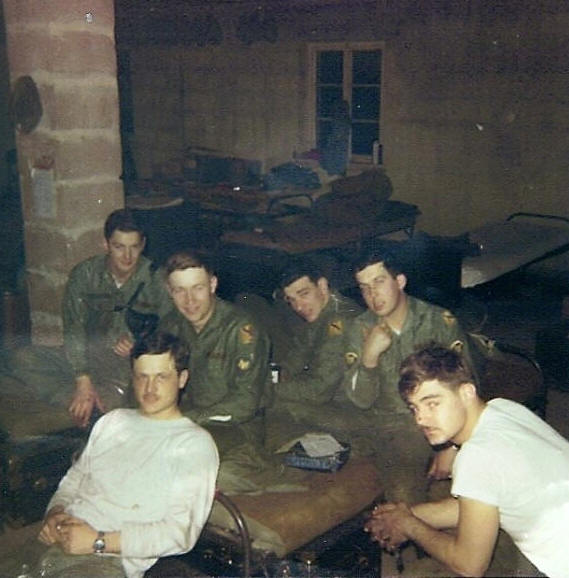
The Seventh Army’s divisions and armored cavalry regiments
have received all the 320 Cobra helicopters armed with the
TOW antitank missiles. More will arrive soon to be deployed
as reserves by the Fifth and Seventh Corps.
The improved model M 60 tank will go to the cavalry units
later this year, although the troopers are pessimistic about
receiving the new XM - 1 battle tank.
“ I’ll be out of the Army and retired before we see that
baby, “ said SGT Reginald Jefferies.
The 155 millimeter howitzer, the
army’s principal field gun, has been improved. The Dragon
antitank weapon has gone to all units.
But the army still relies on the infantryman’s old Redeye
antiaircraft missile and the Chaparral - Vulcan system to
meet hostile air attack.
Production of the Stinger, a more sophisticated antiaircraft
missile for infantry, has just begun. It will be two years
before the army receives it.
There is an urgent need, armored unit officers say, for a
new armored personnel carrier fast enough to keep pace with
the XM - 1 tank and tough enough to take on a new family of
Soviet armored personnel carriers.
The European Command is strengthening American
representation on the far northern flank facing the north
German plain. The first units of Brigade 75 are to arrive at
Carlstadt between Bremen and Bremerhaven in September. By
January 1979, two mechanized battalions, a tank battalion,
an armored infantry battalion, a cavalry troop and combat
engineer battalion will be deployed.
International Cooperation
The brigade will operate in cooperation with British, West
German, Belgian and Dutch forces that would defend NATO’s
vulnerable northern flank in the event of Soviet Attack.
For the brigade to do so effectively there is a need, senior
officers say, for improvement in both equipment and
procedures for command, control and communications in
battle.
American equipment is old and in constant need of what one
officer called “ patching “. Communications are relatively
good at the international level, but at the level of
division and battalion, it is unreliable.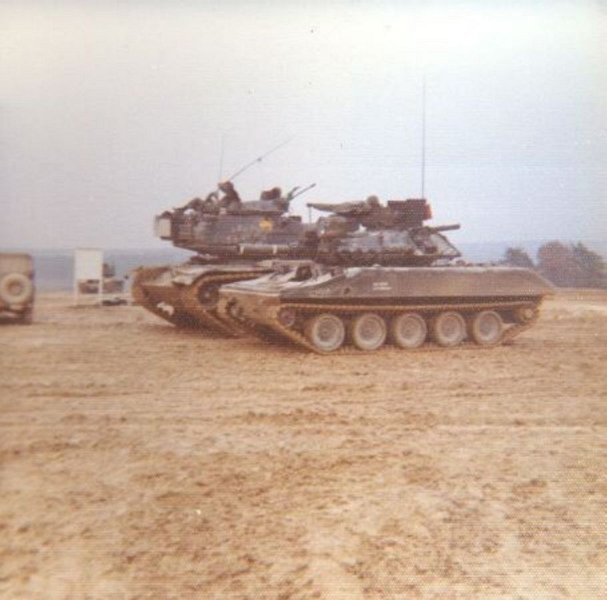
Unit commanders surveying present inadequacies and promised
new equipment share General Blanchard’s balanced optimism.
They believe that with the expansion of the howitzer
batteries from six to eight guns, the deployment of
electronic intelligence battalions and the advent of
improved or new tanks, the Seventh Army’s strength will
increase.
Still a Narcotics problem
The Seventh Army is still plagued with narcotics problems.
The command, noting an increase in narcotics use last year,
after a four year decline, contends that this has not
affected readiness. CPT Jim Young of Los Angeles, considers
the drug situation better than it was when he was an
enlisted man. “ There has been no shooting of hard drugs in
his company,” he said.
“ I think we’re in pretty good shape, “ he said, “ I have
three duds in the 161 people in my troop. I’ve had no court
– martials in the 16 months I’ve been in command and I’ve
had only four A.W.O.L’s . No, these kids are all right.”
| |
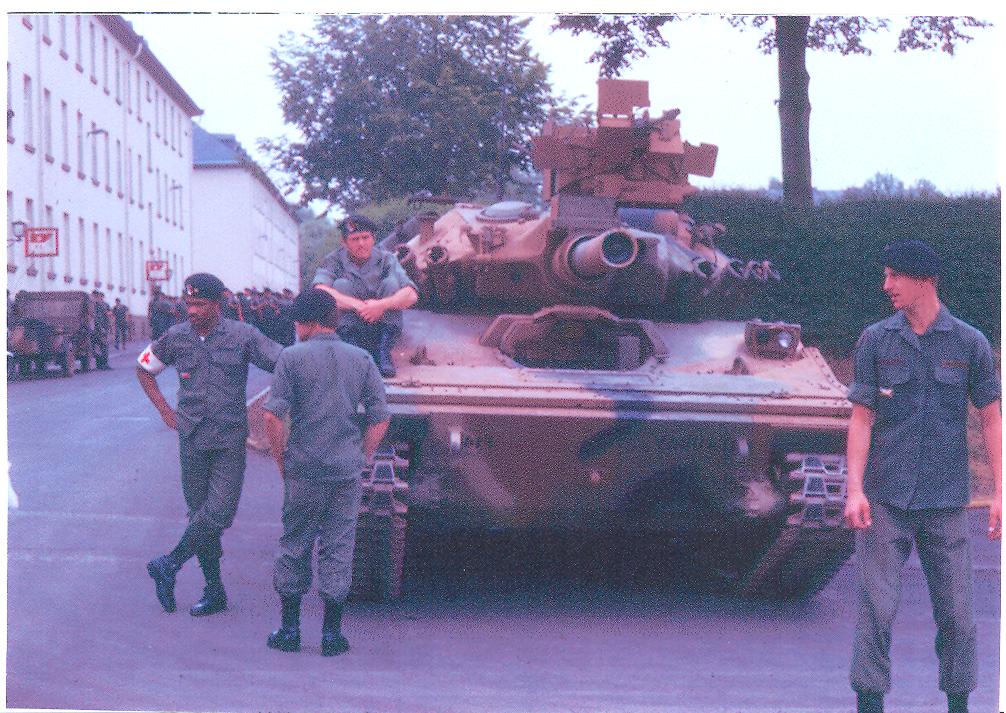
Sheridans were painted one last time. |
|
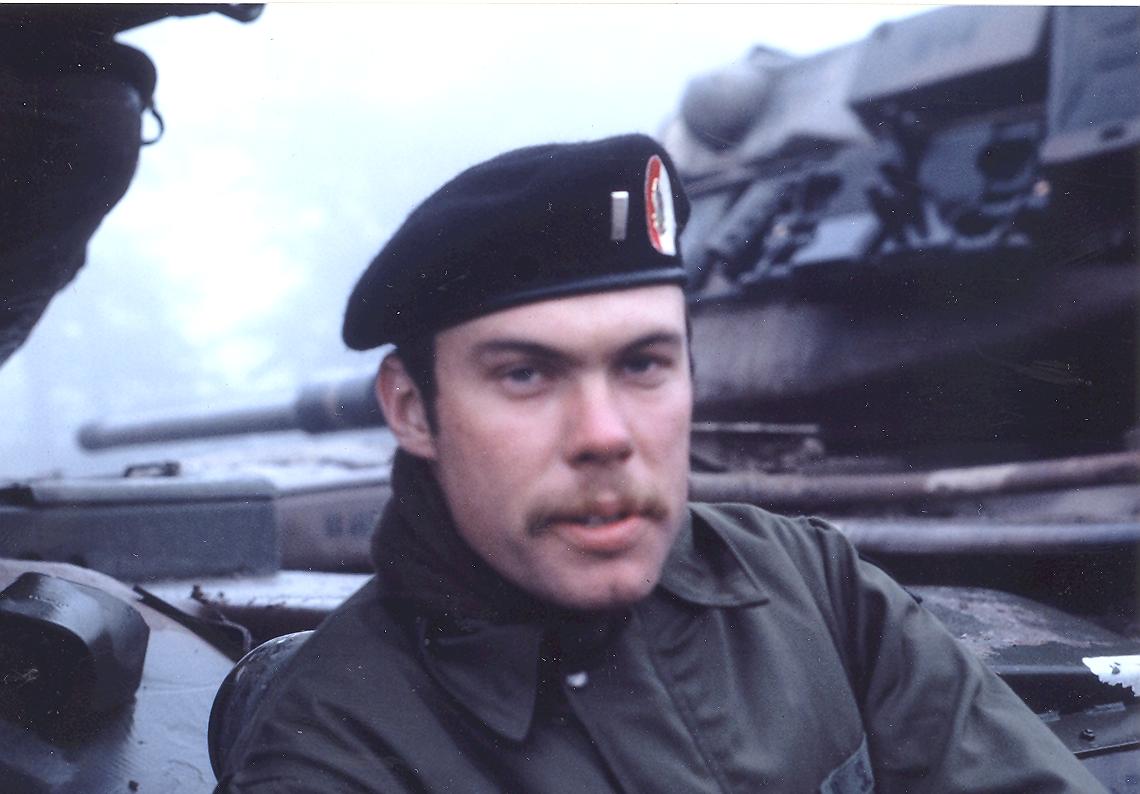
Lt
Keuchenmeister was quizzical. |
|
| |
|
|
|
|
| |

One last time to the ranges. |
|
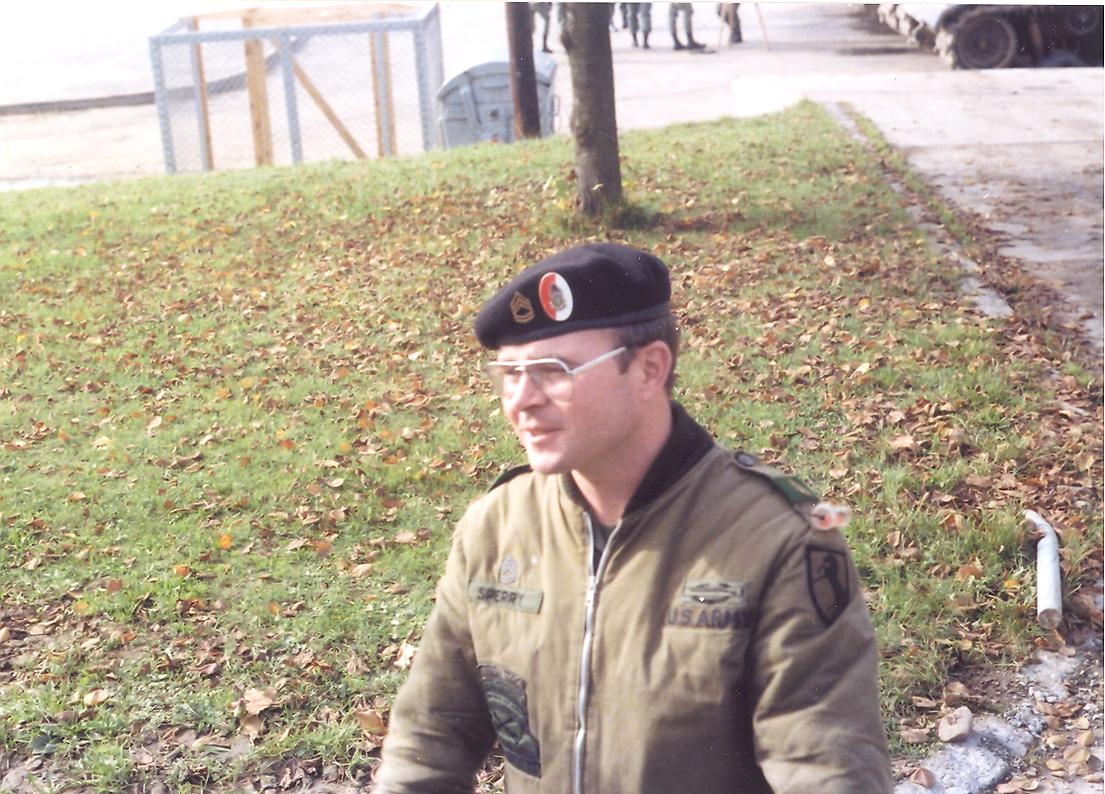
In
1978, SFC Sperry was amused. |
|
| |
|
|
|
|
| |
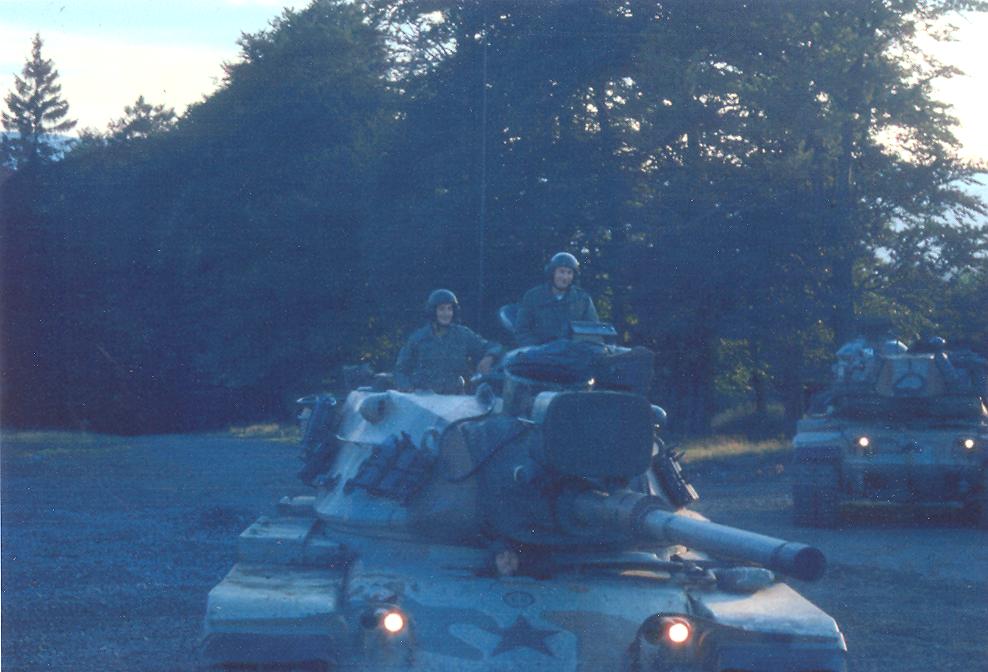
M60A1s were appearing everywhere |
|
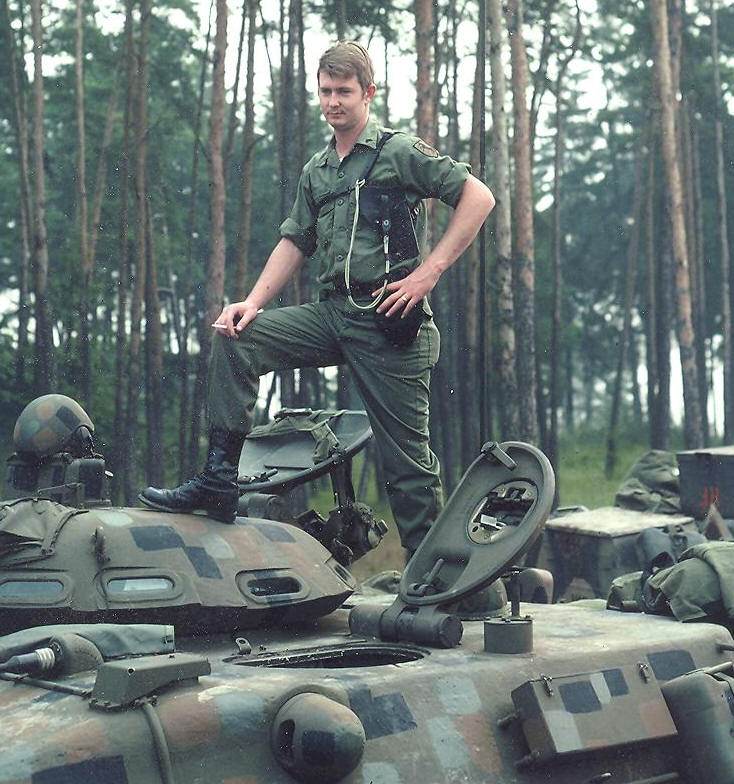
SGT McClellan went to the border camp. |
|
| |
|
|
|
|
| |
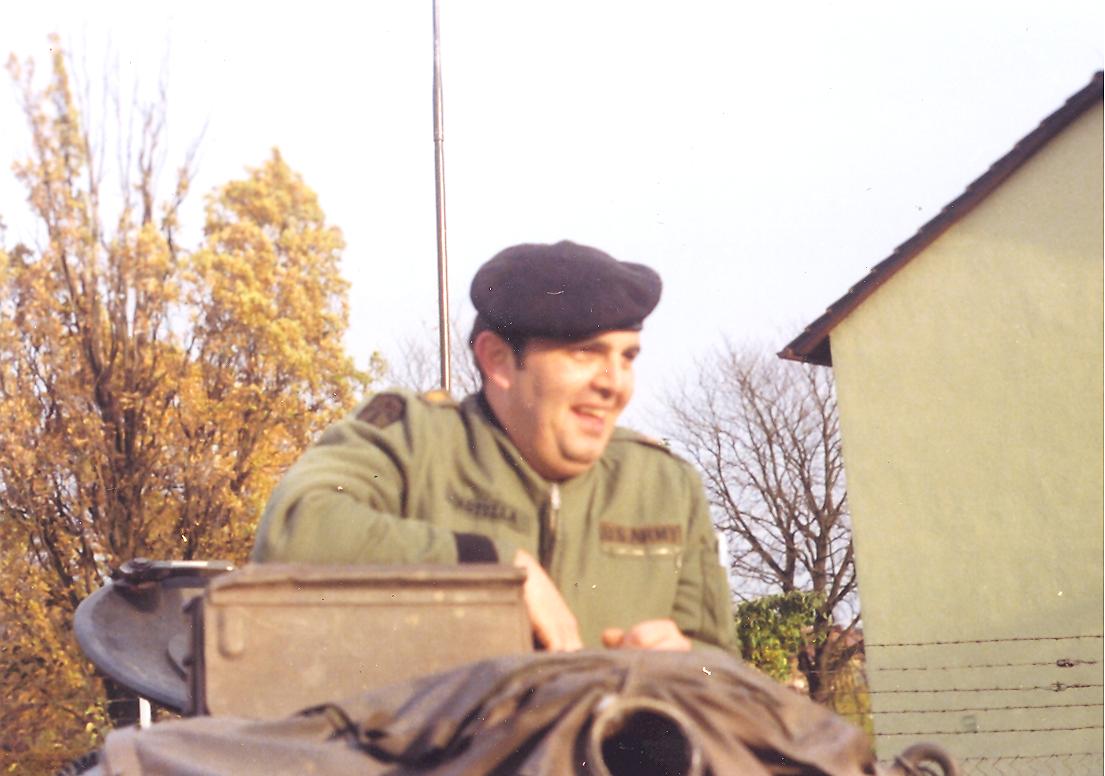
Major Tartella found it all very funny. |
|
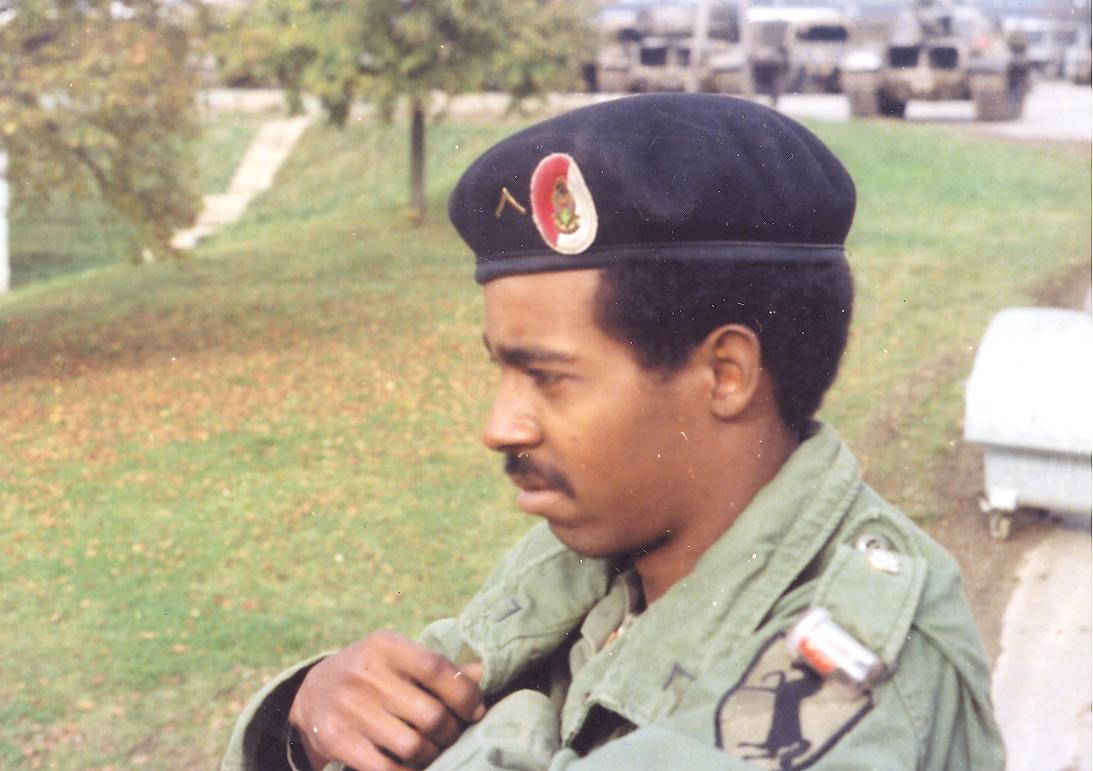
PVT Brooks reached for a cigarette. |
|
| |
|
|
|
|
| |

In 1978, we all were feeling pretty lucky |
|
| |
|
|
Return to Hidden Stories
|
|